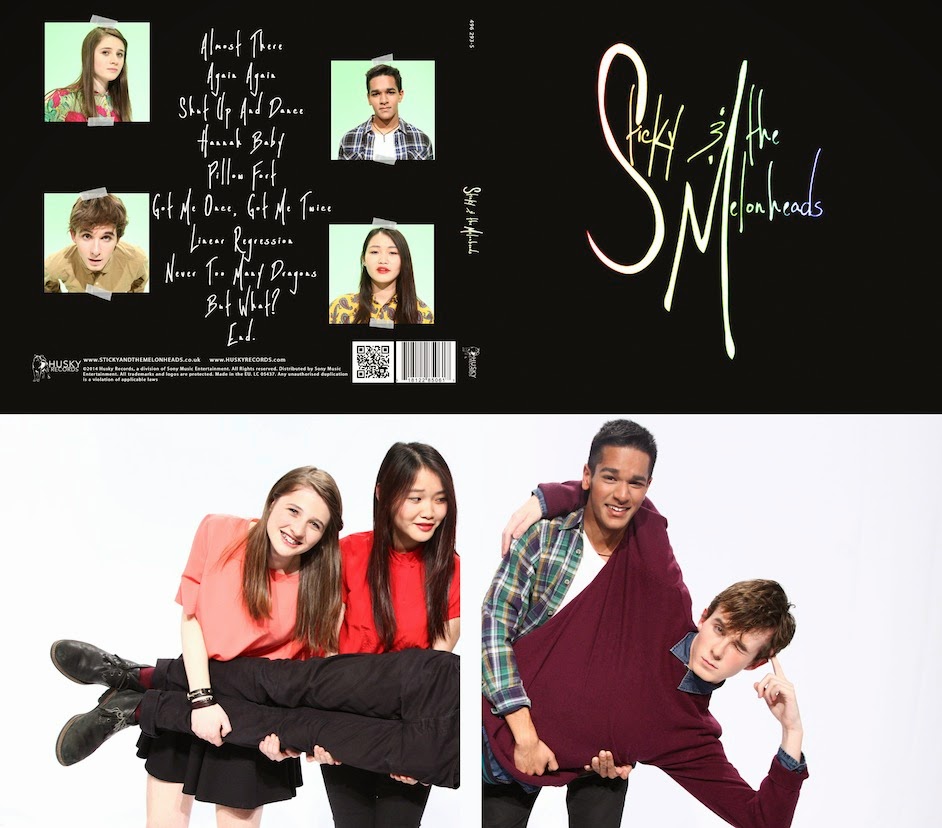 |
| Olivia testing out make-up on Juliette |
We found that the 1950s make-up style consisted mostly of mat red lipstick and simple black eyeliner. It wasn't too over-the-top or colourful.
Olivia suggested we take inspiration from 1950s icons like those shown below (Marilyn Monroe, Audrey Hepburn and Grace Kelly - despite some of their careers extending into later decades we looked at their 50s style).
We decided to use matte-red lipstick, black winged eyeliner, and light eye-shadow. We also found that common 1950s hairstyles included "victory rolls". Juliette tried this out on herself at home:
70s
Looking at make-up in the 1970s we noticed a lot of pastel colours being used - sometimes more than one colour being used for eye shadow - as shown in the make-up adverts above, as well as nude lipstick, so this is what Juliette recreated:
To fit with this, Juliette's hair is going to be loose and not so obviously styled.
90s
70s
She also wore a bandana, which we might have her wear in our music video as it fits with the 70s era.
80s
When Olivia tested out 80s make-up on Juliette, she drew inspiration mainly from 80s icon Madonna:
Olivia made up Juliette using bright coloured eye shadow and glossy pink lipstick, inspired by Madonna:
However, in our music video we are referencing the 80s using The Breakfast Club and costumes that represent the more casual side of the era - what ordinary people, not world-famous pop icons, would wear. We decided then that it would be better to go for a different, more toned-down look with make-up.
 |
| Allison Reynolds from The Breakfast Club influences our 80s make-up |
90s
We decided for our 90s make-up we would mainly reference Cher from the film Clueless:
90s make-up wasn't often particularly bright or extravagant, and this example is a good reflection of that. Inspired by this Juliette is going to wear light eyeshadow and brown/red lipstick, with maybe a little eyeliner. She tried this style at home:
To match with this quite simple look Juliette is going to have her hair down, also like the character in Clueless.
GIRL BAND MEMBERS
We want the female band members in Sticky and the Melonheads to be viewed in the same sort of way as the male band members - we don't want their make-up to suggest that their appearance is more important than the boys'. Their make-up therefore will be simple - nothing much beyond eyeliner and mascara, demonstrated by the artists below:
 |
| Elena Tonra, lead vocalist of Daughter |
 |
| Haim |
MALE BAND MEMBERS
We don't want to do anything particularly to the male band members' hair - Brandon has very short hair that can't be styled, and Jacob's hair is also quite short and as an indie artist, wouldn't conventionally be too obviously styled. The images of bands below show that their hair is generally left quite loose and natural-looking:
For the 50s era, the lead's hair will be inspired by the Greaser image, hair gelled back like Danny Zuko from Grease:
 |
| Indie band Vampire Weekend |
 |
| Indie band Everything Everything |
 |
| Indie pop band Foster the People |
For the 50s era, the lead's hair will be inspired by the Greaser image, hair gelled back like Danny Zuko from Grease:
80s:
Here are some examples of men's hairstyles in the 80s:
Keith Nelson from Some Kind of Wonderful (1987) (left), pop singer Rick Astley (right)
Brian Johnson from The Breakfast Club (1985) (left), Chuck Cranston from Footloose (1984) (right)
 |
| Ferris Bueller from Ferris Bueller's Day Off (1986) |
They often had either fairly long hair (like the characters Keith Nelson and Chuck Cranston pictured above) shaped in that specific way, but Jacob's hair is too short for this so we decided on a style inspired by the other three pictures above - his hair gelled to the side on the top of his head, looking longer on the top than the sides.
For 70s, 90s and modern, although we might comb Jacob's hair we aren't going to do too much else to it - this was/is common in the 90s/modern eras and most iconic 70s hairstyles require hair longer than Jacob's.



















































